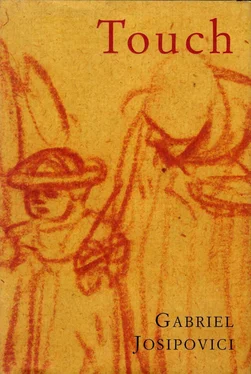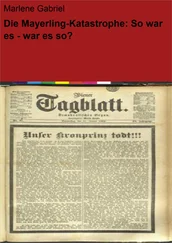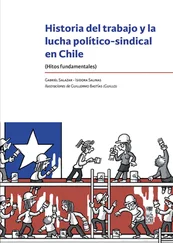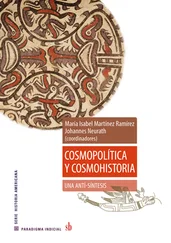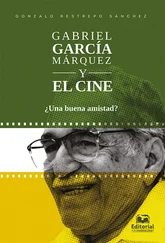Gabriel Josipovici - Touch
Здесь есть возможность читать онлайн «Gabriel Josipovici - Touch» весь текст электронной книги совершенно бесплатно (целиком полную версию без сокращений). В некоторых случаях можно слушать аудио, скачать через торрент в формате fb2 и присутствует краткое содержание. Год выпуска: 1996, ISBN: 1996, Издательство: Yale University Press, Жанр: Современная проза, на английском языке. Описание произведения, (предисловие) а так же отзывы посетителей доступны на портале библиотеки ЛибКат.
- Название:Touch
- Автор:
- Издательство:Yale University Press
- Жанр:
- Год:1996
- ISBN:0300066902
- Рейтинг книги:5 / 5. Голосов: 1
-
Избранное:Добавить в избранное
- Отзывы:
-
Ваша оценка:
- 100
- 1
- 2
- 3
- 4
- 5
Touch: краткое содержание, описание и аннотация
Предлагаем к чтению аннотацию, описание, краткое содержание или предисловие (зависит от того, что написал сам автор книги «Touch»). Если вы не нашли необходимую информацию о книге — напишите в комментариях, мы постараемся отыскать её.
Touch — читать онлайн бесплатно полную книгу (весь текст) целиком
Ниже представлен текст книги, разбитый по страницам. Система сохранения места последней прочитанной страницы, позволяет с удобством читать онлайн бесплатно книгу «Touch», без необходимости каждый раз заново искать на чём Вы остановились. Поставьте закладку, и сможете в любой момент перейти на страницу, на которой закончили чтение.
Интервал:
Закладка:
Though they might be translated from their relatively inaccessible place of origin to one within easy reach of a particular community, relics came bringing with them a sense of their place of origin. And no one forgot that it was God who had given the relic, first by letting it be found and then by allowing it to be moved. Thus St Augustine comments on the miracles surrounding St Stephen, the first Christian martyr: ‘His body lay hidden for so long a time. It came forth when God wished it. It has brought light to all lands, it has performed such miracles.’ And Brown concludes: ‘The discovery of the relic, therefore, was far more than an act of pious archeology, and its transfer far more than a strange new form of Christian connoisseurship; both actions made plain, at a particular time and place, the immensity of God's mercy … They brought a sense of deliverance and pardon into the present.’
What this suggests is that even the translation of relics did not abolish the ‘therapy of distance’. The discovery, translation and installation of relics made concrete the mercy of God. It was not the relic itself that was important, as Brown says, so much as ‘the invisible gesture of God's forgiveness which had made it available in the first place; and so its power in the community was very much the condensation of the determination of that community to believe that it had been judged by God to have deserved the praesentia of the saint’. In other words, the precise events of the discovery of the relic and the ceremonies with which it was brought and installed counted for much more than the mere fact of its presence in a particular community.
The relic and the ceremonies associated with it were of equal importance and could no more be separated than the crossing of the Red Sea by the Israelites or the Passion of Jesus could be separated from the celebration of those events amongst Jews and Christians. In both instances the power of the stories and rituals depended on a double focus: God had been merciful, but terrible things had also taken place, and neither aspect must be forgotten. As Brown puts it:
While the relic might be discovered, transferred, installed, and the annual memory of the saint be celebrated in an atmosphere of high ceremony associated with unambiguously good happenings, the relic itself still carried with it the dark shadows of its origin; the invisible person, whose praesentia in the midst of the Christian community was not a token of the unalloyed mercy of God, had not only once died an evil death; but this evil death had been inflicted by an evil act of power. The martyrs had been executed by their persecutors … Their deaths, therefore, involved more than a triumph over physical pain; they were vibrant also with the memory of a dialogue with and a triumph over unjust power.
By the sixteenth century all this had been forgotten, at least by those in authority. In 1535 Thomas Cromwell sent out his men to the monasteries of Britain on a fact-finding mission, their brief obviously being to provide him with enough ammunition to destroy, not reform them. The general injunction for the visitation, as it was called, stipulated that religious houses ‘shall not show no reliques, or feyned miracles, for increase of lucre’, and it was not difficult for the visitors to find evidence of such practices. From Bath Abbey, for example, one of them, Richard Layton, wrote: ‘I send you vincula S. Petri, which women put about them at the time of their delivery … I send you also a great comb called St. Mary Magdalen's comb, and St. Dorothy's and St. Margaret's combs …’ From Bury St Edmunds John ap Rice reported: ‘Amongst the reliques we founde moche vanitie and superstition, as the coles that Saint Laurence was tosted withall, the paring of St. Edmundes naylles, S. Thomas of Canterbury penneknyffe and his bootes, peces of the olie crosse able to make a hole crosse of … with suche other …’
But how one reads the evidence depends on one's presuppositions. There can be no doubt that for Cranmer and his men these were evident signs of the gullibility of the common people and their exploitation by a rapacious Church. But, as Duffy points out:
Everywhere one turns in the … records of the visitation one finds evidence of large-scale resort by the people to the monastic shrines as centres of healing and help …|. In attacking monastic ‘superstition’ … Cromwell's men were striking at institutions with a central place in popular religious practice, perhaps most unexpectedly in the domestic intimacies of pregnancy and childbirth. In such widespread evidence of the integration of the monastic shrines into the fabric of popular religion, however, the visitors saw, or chose to see, nothing more than evidence of large-scale exploitation of simple believers.
The stripping of the churches and monasteries, the destruction of images and the reformation of the liturgy were all carried out with that mixture of righteousness and rapaciousness which seems to characterise religious conflicts. Though the transition from medieval to modern is particularly clearly displayed in sixteenth-century England, it was of course not confined to that country. Duffy's final words in The Stripping of the Altars , though specifically about England, are in fact a dirge on the death of a culture which had flourished in Europe for a millennium (and which went on flourishing in other parts of the world till our own day), and with the consequences of whose passing we are still, whether we realise it or not, trying to come to terms today: ‘The price for such accommodation [i.e. the “Elizabethan Settlement”]’, writes Duffy,
was the death of the past it sought to conserve … Cranmer's sombrely magnificent prose, read week by week, entered and possessed their minds, and became the fabric of their prayer, the utterance of their most solemn and their most vulnerable moments. And more astringent and strident words entered their minds and hearts too, the polemic of the Homilies , of Jewel's Apology , of Foxe's Acts and Monuments , and of a thousand ‘no popery’ sermons, a relentless torrent carrying away the landmarks of a thousand years. By the end of the 1570s, whatever the instincts and nostalgia of their seniors, a generation was growing up which had known nothing else, which believed the Pope to be Antichrist, the Mass a mummery, which did not look back to the Catholic past as their own, but another country, another world.
14 The Girdle and the River
The cult of relics in the Middle Ages is inseparable from the social and religious world in which it was embedded. It is this which holds in check the natural human propensity to gather and possess, to keep close to one objects that will effect instant cures for bodily and spiritual sickness. Of course the Reformers' antagonism to pilgrimage, to relics and to the entire cult of the saints in the late Middle Ages does have a point. Much of it did reflect the greed of the Church and the gullibility of the people. But what sympathetic studies like those of Brown for the beginning and Duffy for the end of the period bring out is that terms like ‘gullibility’ are not entirely transparent. No object was ever thought to be able to effect a cure by simple contact; everything depends rather on the world picture of the seeker, and this cannot be separated from that of the society as a whole. Where plague, famine, oppressive lords and infant mortality were rife, how important to feel that the world was not totally evil or incomprehensible, that the saints, though dead, were still there to care for you, and that it was still possible to enter into contact with God himself through his Son, whose death and resurrection were celebrated daily in the Mass. The issues are never as clear-cut as contemporary polemicists or later historians of ideas like to suggest, which is why poets and painters, who thrive on ambiguity, usually tell us more about the life of the past than theologians or lawyers. The author of those remarkable late medieval English poems, Pearl and Sir Gawain and the Green Knight , for example, was profoundly interested in the subtle conflicts and inevitable overlaps between ‘magic’ and ‘religion’, holding and grasping, and he has much to tell us about how men react when their natural trust comes under pressure.
Читать дальшеИнтервал:
Закладка:
Похожие книги на «Touch»
Представляем Вашему вниманию похожие книги на «Touch» списком для выбора. Мы отобрали схожую по названию и смыслу литературу в надежде предоставить читателям больше вариантов отыскать новые, интересные, ещё непрочитанные произведения.
Обсуждение, отзывы о книге «Touch» и просто собственные мнения читателей. Оставьте ваши комментарии, напишите, что Вы думаете о произведении, его смысле или главных героях. Укажите что конкретно понравилось, а что нет, и почему Вы так считаете.
